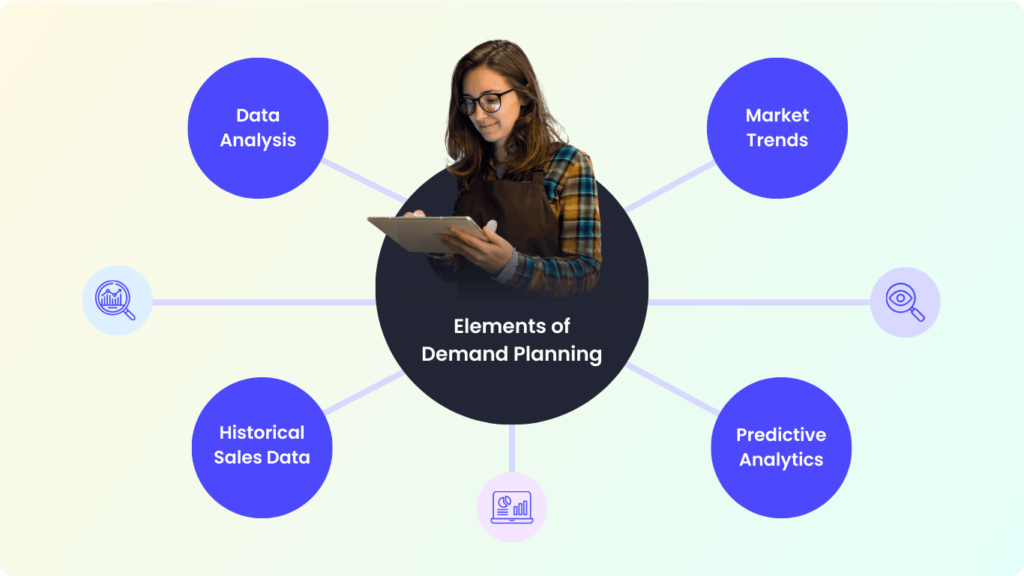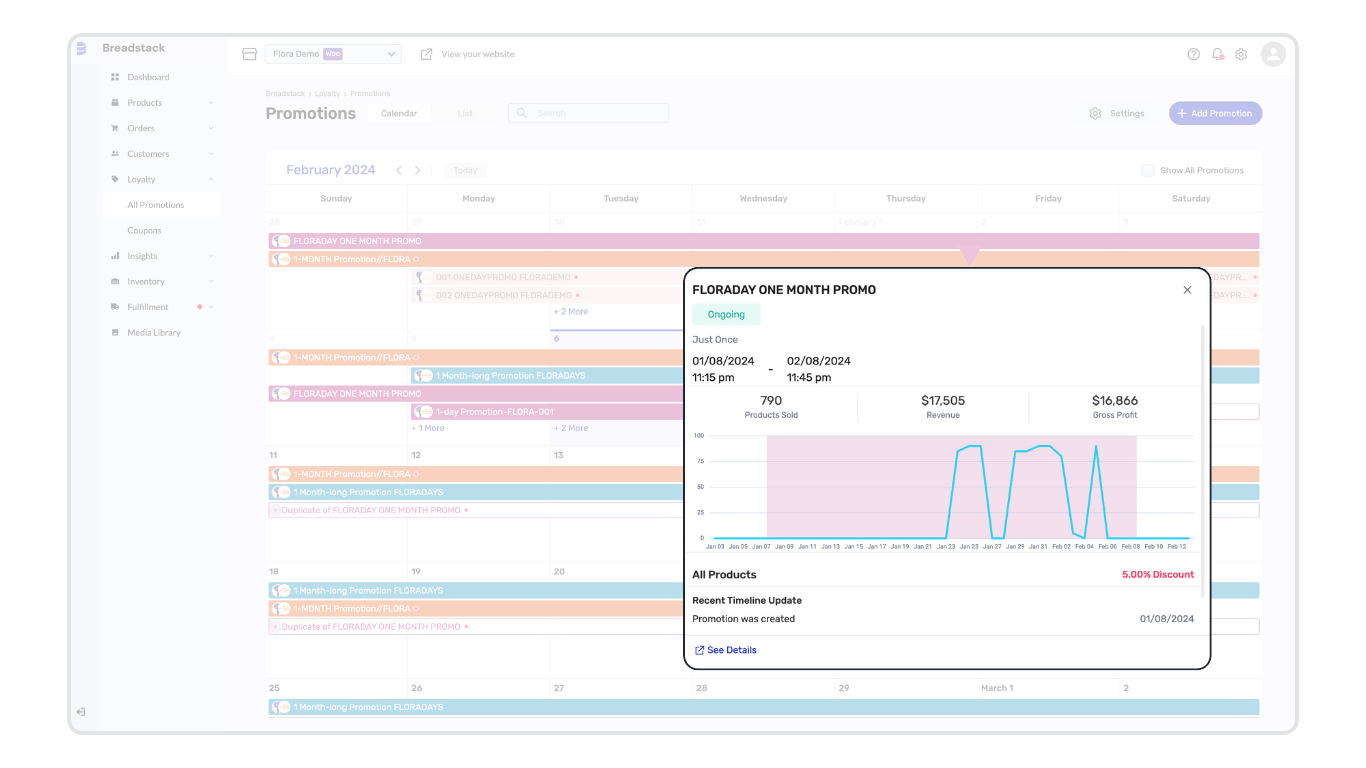If a business plans for a big promotion but does not have enough inventory to maximize its revenue, then it would be considered a loss in opportunity cost. That is why it is important to master demand planning to ensure there is enough inventory available for sales.
With demand planning, it’s all about finding that sweet spot in your inventory. Stock too much, and you’re stuck with excess costs and potential waste. Too little, and you risk losing sales and disappointing customers. It’s this fine art of balancing that keeps everything in sync and ready for what’s next.
What is demand planning?
Demand planning is the process of forecasting and predicting what your customers will want, how much they’ll want, and when they’ll want it.
It involves analyzing historical sales data, market trends, and other relevant factors to predict future customer needs. The accuracy of these predictions is vital for businesses to maintain the right inventory levels, not too much or too little stock.

Why is Demand Planning Important?
Demand planning is the driving force behind efficient operations and overall business success. It helps reduce operational costs, meeting and exceeding customer expectations, and driving profitability.
The value lies in its ability to streamline supply chain operations. Businesses can effectively plan their inventory levels, production schedules, and distribution strategies, by accurately predicting customer demand.
This level of precision in planning helps minimize instances of overstocking or understocking. Overstocking ties up capital in unsold inventory and increases storage costs, while understocking leads to missed sales opportunities and potential damage to customer relationships.
Elements of Demand Planning
A reliable and accurate demand plan combines all the key elements of data analysis, market trends, historical sales data, and predictive analytics. Understanding how these components interconnect together is essential for businesses looking to create a reliable plan.

Data Analysis
Data analysis involves examining current and past sales data, inventory levels, and other relevant information. This helps identify patterns and anomalies that could influence future demand. Data analysis becomes the foundation for all other elements to build.
Market Trends
The understanding of market trends requires research on broader economic factors, industry-specific trends, consumer behavior changes, and competitor activities. Market trends provide context to the data, allowing businesses to adjust their predictions in line with external factors.
Historical Sales Data
Historical sales data offers insights into seasonal demand fluctuations, product life cycles, and customer buying patterns. By analyzing this data, businesses can identify trends and predict future sales with greater accuracy.
Predictive Analytics
Predictive analytics uses statistical algorithms and machine learning techniques to forecast future demand based on historical data and trends. Businesses can then easily make data-driven predictions about future market behavior.
Best Practices for Demand Planning
Demand planning involves a series of steps, built on software that provides accurate information and efficient processes. Some best practices to consider are:
Implementing Software

Tools like AI and machine learning algorithms can analyze large datasets, identify patterns, and predict future trends with high accuracy. Breadstack uses advanced technology that can now process data much faster and predict more accurately than traditional methods, leading to more reliable forecasts.
Collect and Organize Data
Data mining and aggregation can analyze numbers from different angles to identify areas for improvement. Having real-time inventory, coupled with detailed reports, provide a clear understanding of these trends.

Define Process Models
An undefined process for a demand planning cycle can easily confuse processes with information, which can hurt performance overall. A defined demand planning process for most businesses usually consists of the following steps:
- Getting the data ready
- Initial projections and forecasting
- Including market research data
- Gathering financial reports and sales targets to balance top-down financial and sales projections with bottom-up forecasts.
- Real-time analytics based performance monitoring.
Analyze and Monitor
With real time analytics and comprehensive data reports, Breadstack automatically generates customized forecasts to manage inventory efficiently. By taking historical and sales data into account, Breadstack can accurately predict target requirements to maximize profits for promotions.
Learn more about Breadstack’s inventory management software here.
Demand Planning vs. Demand Forecasting

Demand planning and demand forecasting share similarities, but demand planning is generally seen as a more inclusive concept. While demand forecasting focuses primarily on using statistical methods to predict future customer demand, demand planning extends this to managing the overall inventory strategy.
These two concepts are often mentioned as a synonym for demand management, yet they serve as individual elements within it. Demand management is a broader term that also covers efforts to influence demand, such as adjusting prices, swapping products, or using promotions.
However, it’s worth noting that the term ‘demand planning’ might be slightly misleading. The term suggests it encompasses all planning activities, but in reality, many critical aspects of planning actually happen during later stages, like in Sales and Operations Planning (S&OP), Material Requirements Planning (MRP), and production planning processes.

Future of Demand Planning in Supply Chain
As we look to the future of demand planning in supply chain management, it’s evident that technological advancements are set to revolutionize the way businesses forecast and meet customer demand.
One of the most significant game-changers is having real-time analytics into inventory. With the ability to analyze data as it comes in, businesses can make quicker, more informed decisions. This real-time insight allows for rapid responses to market changes, leading to more efficient operations.
Another transformative factor is Artificial Intelligence (AI). AI algorithms can process vast amounts of data, recognize patterns, and even predict future trends with remarkable accuracy. This allows for more precise demand planning, reducing the risks of over or understocking. AI can also automate routine tasks, freeing up human resources for more strategic, value-added activities.
Breadstack’s demand planning feature combines AI with real-time analytics for comprehensive insights and reports into your inventory management. Discover how Breadstack can transform your demand planning strategy and help automate processes in supply chain management.

